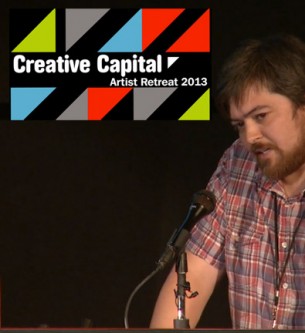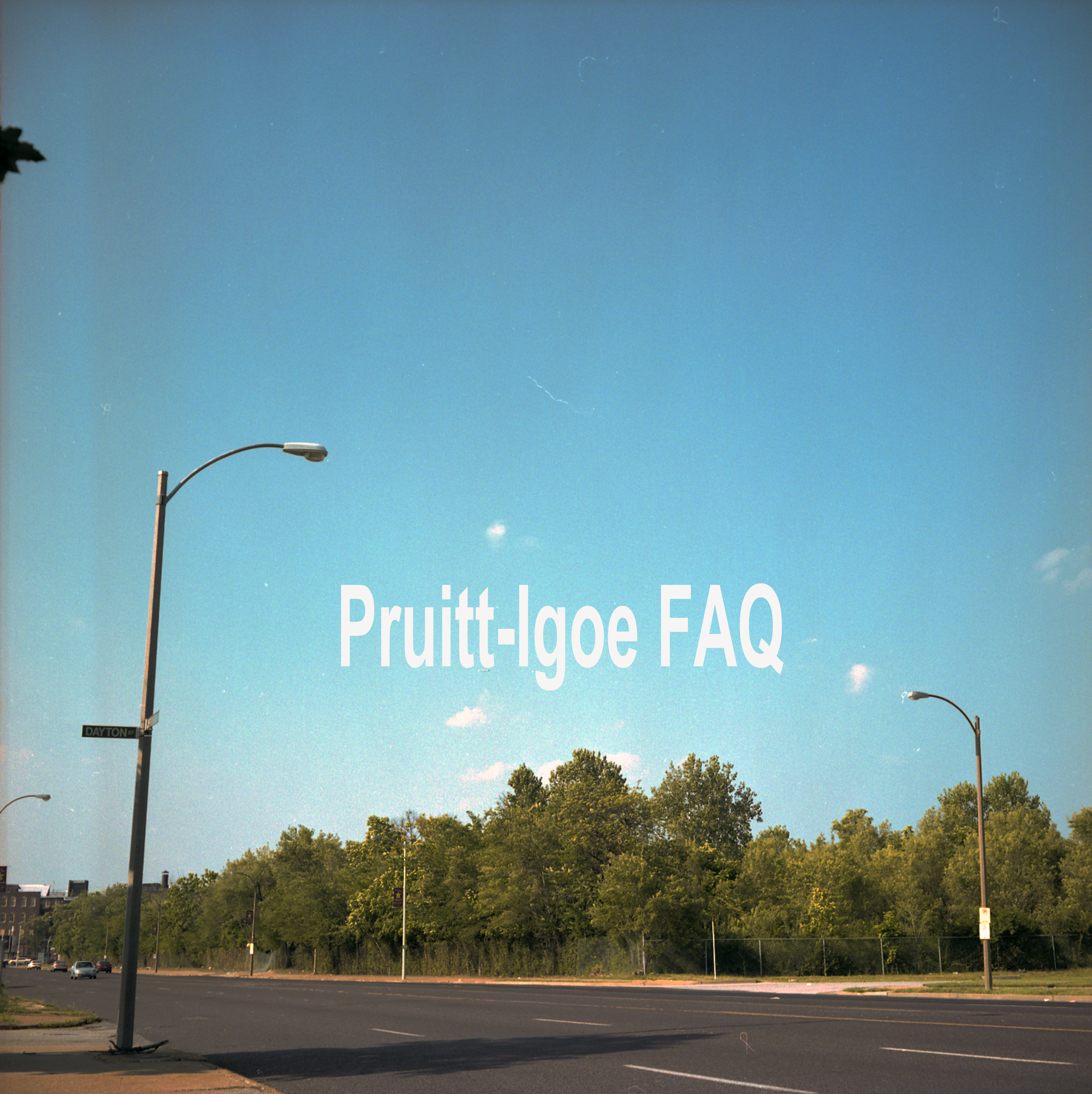Pruitt-Igoe FAQ
When did the buildings come down?
The St. Louis Housing Authority demolished three buildings in 1972; these were demolished through explosive blasts. The remaining 30 buildings came down in 1976 and 1977; these were demolished by wrecking ball. (The buildings were built between 1952 and 1956.)
How many acres is the site?
Pruitt-Igoe is 33 acres.
Are there any Pruitt-Igoe remains? (Example lamppost or structures)
The only buildings still standing on the site are accessory structures: the Union Electric Sub-Station (1952), Pruitt Elementary School (1955) and the Crunden Branch Library (1959). There are some crushed bits of reinforced concrete from the buildings that remain, as well as footings, tunnels and other underground components. Throughout the site, concrete walkways and curbs remain both exposed and under rubble piles. Dickson Street, the east-west street, is intact despite encroaching tree lines. A lamp post that once lit the walk in front of a tower inexplicably stands on the south end of the site. A few fence posts can be found that correspond to Housing Authority efforts to secure vacant towers before demolition.
Who planted the trees?
Some of the oaks in the site are street and lawn trees planted by the St. Louis Housing authority before the demolitions. The other trees are all volunteers.
Why did they plant the trees?
The trees were planted to provide shade to the residents.
What types of trees or plants are in there?
There are some slow-growth trees including oaks and maples, but the most common trees on the site are fast-growing somewhat invasive types that include poplar, tree of heaven and mimosa. Juniper trees can be found throughout the site. Sumac and bush honeysuckle have invaded many areas on the site, choking out other plant growth.
What types of animals have you seen in there?
There are wild turkeys, squirrels, opossums, rabbits, dogs, cats and many birds.
Who owns the Pruitt-Igoe lot?
The Land Clearance for Redevelopment Authority.
How much does it cost?
The Land Clearance for Redevelopment Authority has not set any price for the land. Staff members have stated that they would negotiate with any interested buyer.
What are the stipulations or condition of purchasing the lot?
The St. Louis Development Corporation, the city’s development agency that staffs the Land Clearance for Redevelopment Authority, has stated that it will privilege redevelopment plans for the site that create permanent jobs.
What make Pruitt-Igoe a brownfield?
Although Pruitt-Igoe’s soil has not been professional evaluated, it is known that the buildings were demolished containing lead paint and asbestos not remediated or removed. Additionally there are potential PCBs and gasoline contaminants from previous uses on the site before Pruitt-Igoe was built.
What has been dumped there?
The city government dumped tons of debris and fill from the excavation for the Edward Jones Dome in 1993-1994, and that material contains parts of buildings and other elements. Other dumping includes tires, building debris, computers, gravel and other un-inventoried materials.
What ward is Pruitt-Igoe in?
Ward 5.
What are the details of Paul McKee’s two-year option to purchase Pruitt-Igoe?
McKee’s company Northside Regeneration LLC paid $100,000 to hold an exclusive two-year option to purchase the site. Under the agreement, McKee can close on the site for an additional $900,000 only if he can finance site redevelopment that includes creation of permanent jobs. The Land Clearance for Redevelopment Authority will determine if the plans meet those requirements.
When will his two-year option end?
The option expires on February 23, 2014.
What is the process to purchase the Pruitt-Igoe lot?
An interested buyer can make an offer directly to the Land Clearance for Redevelopment Authority, which has a board appointed by the mayor that makes all final sales decisions. The sale does not require legislation or the approval of the alderperson.



